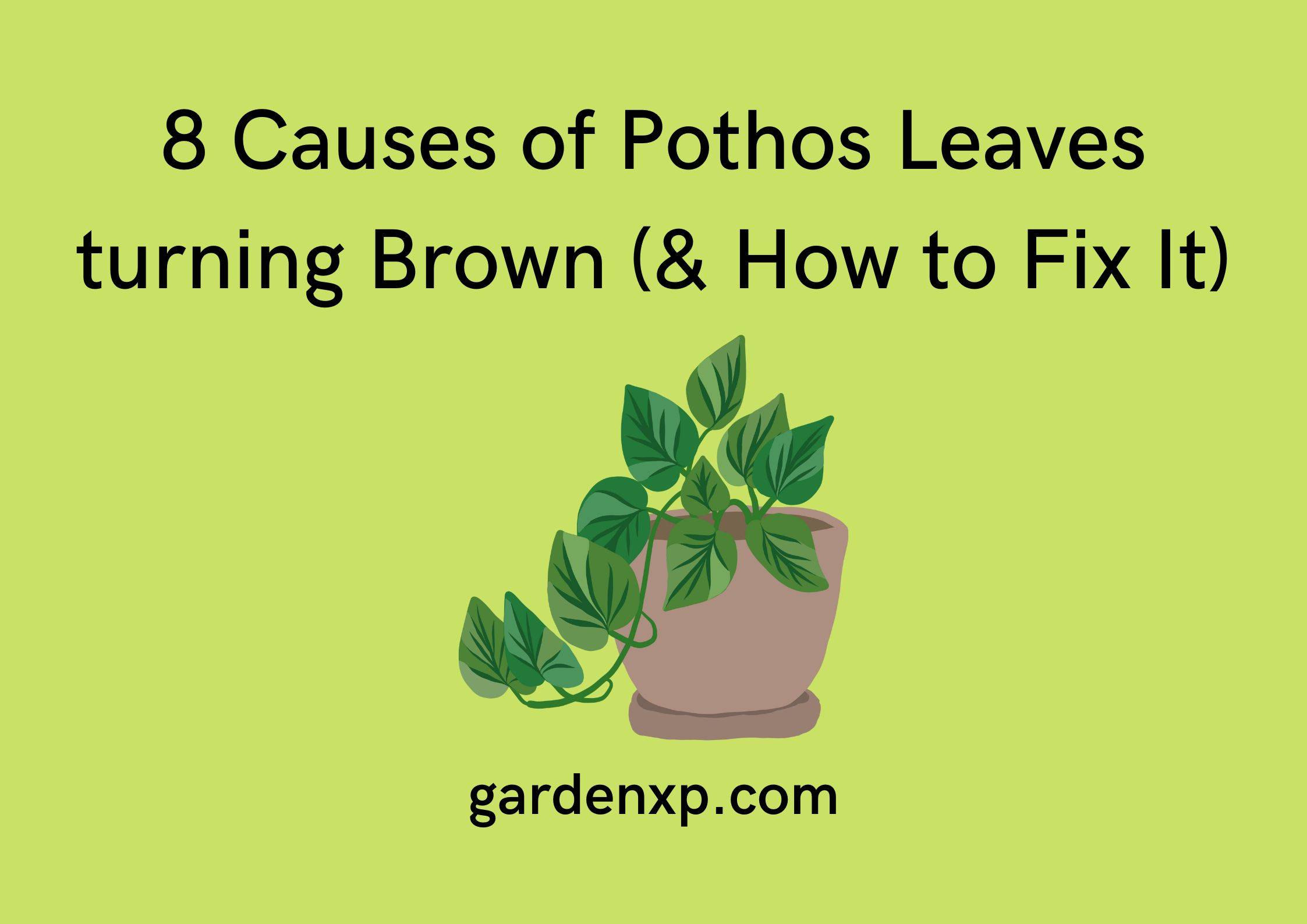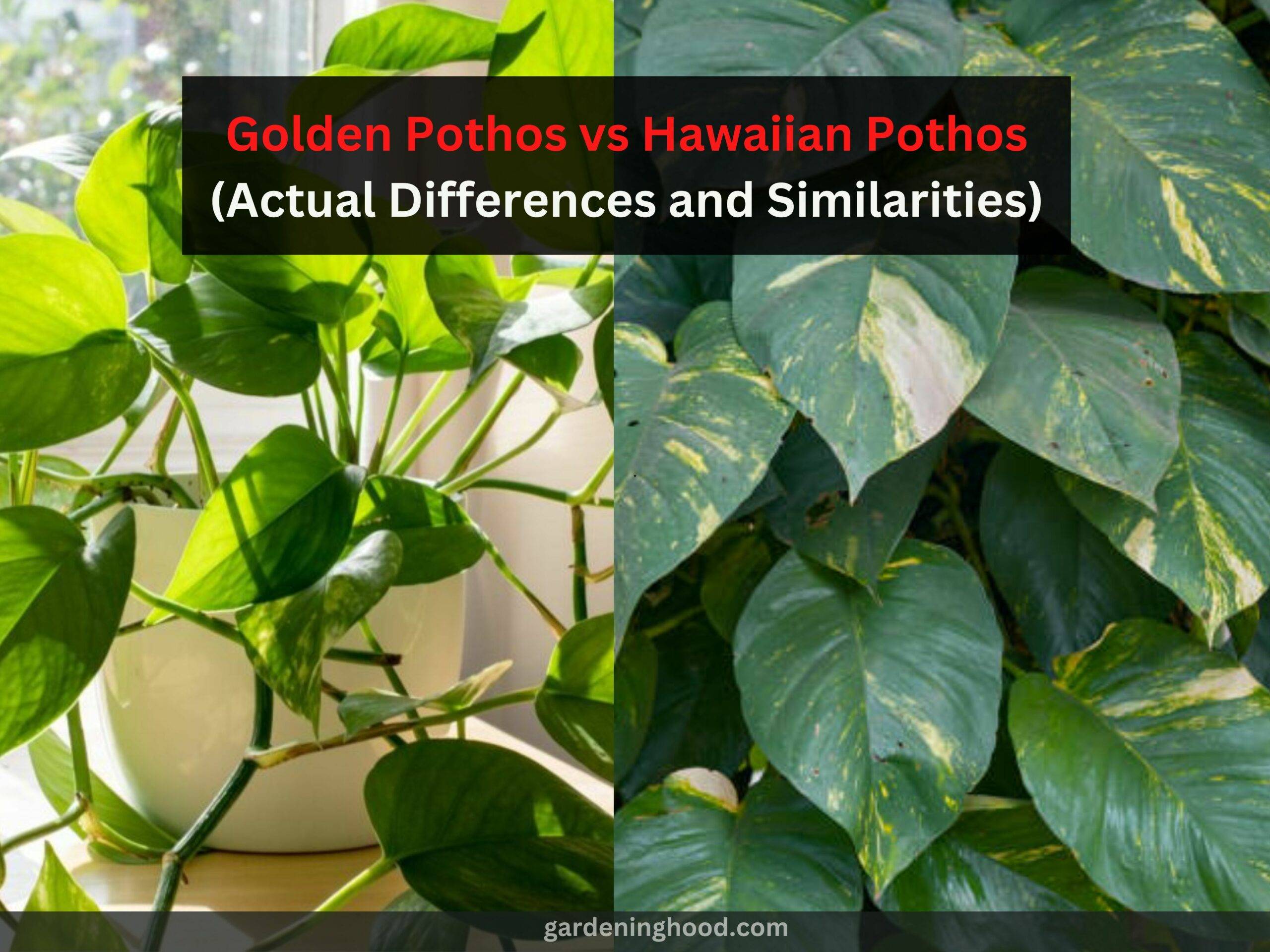How to Grow and Care Glacier Pothos in Your Garden- Full Guide
I think growing pothos is one of the easiest plants to grow because, in my experience, plants that show their needs are easier to care for and grow. Just giving an example, pothos will start to droop when they are thirsty, making it easy to decide what they need.
So, what are you waiting for? Here, I have explained one type of pothos, such as Glacier pothos, which will add more greenery to your garden. If you are not satisfied with the information or want to know more, please ask me in the comment section, and I will look into it.
Glacier Pothos:
Basically, it is a cultivare of well-known marble queen photos having a delicate pothos variation with gorgeous green and white hues. De might get confused between two near cousins such as the N’Joy pothos and the pearls and jade pothos because the untrained eye of all three types of pothos does seem similar But glaciers pothos do consist of a more silvery-green hue which you can use to identify which is glaciers pothos. The plants do have leaves in oval shape when compared to both of them.
You can consider them to grow because of their quite robust and low-maintenance which the majority of pothos do have. They are mostly used to thrive best in typical home environments and use to look fantastic hanging from a wall or shelf, pot, or climbing in upwards from a moss pole.

Let’s learn about everything you need to provide the glacier pothos for growing, caring, and different varieties.
| Botanical Name | Epipremnum aureum ‘Glacier’ |
| Common Name | Glacier pothos |
| Family | Araceae |
| Plant Type | Perennial, vine |
| Mature Size | 6 ft. long (indoors) |
| Sun Exposure | Partial |
| Soil Type | Moist but well-draining |
| Soil pH | Acidic |
| Bloom Time | Spring, summer |
| Flower Color | Green, white |
| Hardiness Zones | 10-11, USA |
| Native Area | Asia |
| Toxicity | Toxic to pets |
Glacier Pothos Care:
To keep the Glacier pothos alive the easy step is to provide them with semi-regular watering, and bright indirect light to keep their plant happy. In case you already have grown the types of plant then there will be no problem growing this variegated cultivator. Here are some basic requirements for growing Glacier pothos:
Light:
- You need to provide the Glacier pothos plenty of bright light so you need to place the plant in a location that receives several hours of bright indirect light.
- Although many varieties of pothos grow well in medium light to low light but Glacier pothos is not one of them.
- In case pothos Not getting the light required then the highly variegated leaves will start to become Leggy and will lose their variegation.
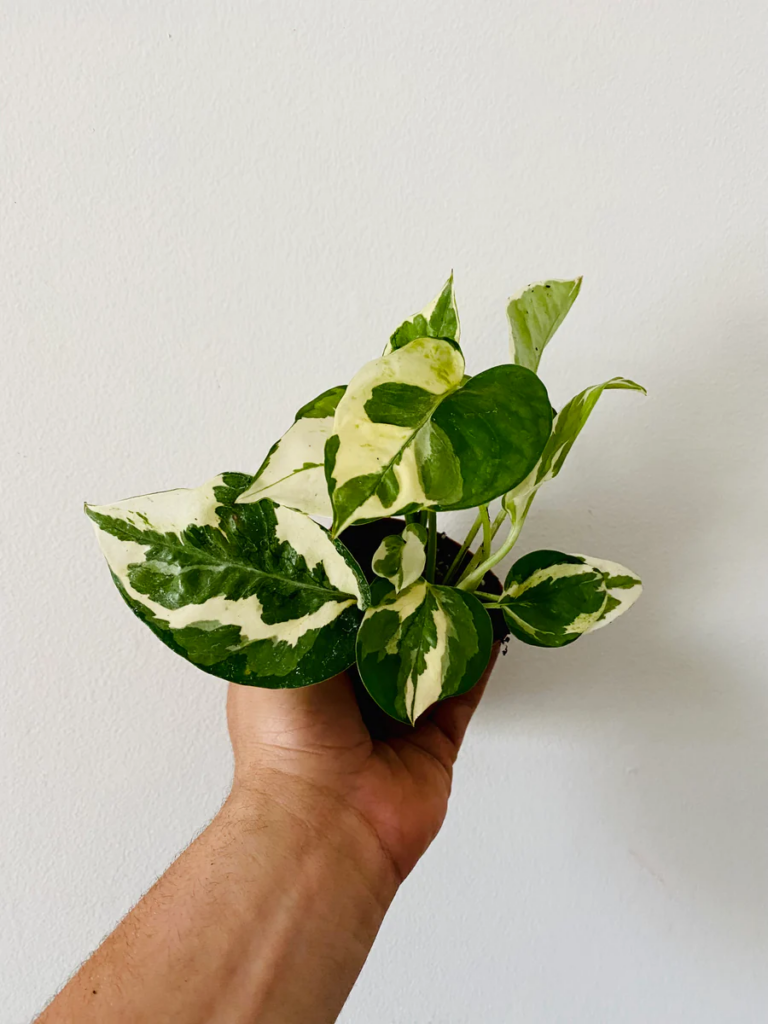
Soil:
- To plant them you need a soil mix that is well-drained and also retains some moisture.
- For making the soil a mixture of 1:1 organic and mineral components will be a perfect balance.
- Let’s understand it by an example combining two equal parts of indoor potting soil and perlite is the best option to get quickly mixed up at home that you can purchase from the local nursery or Garden centre. however, most of the potting soil already has perlite in it and if you add more While planting Glacier pothos it will make sure the soil does not get compact over time and help the root to provide plenty of drainage to the plant.
Water:
- To water the plant make sure to let the top two to three inches of the soil dry out between the watering only then water the plant.
- The plant does love regular watering but it is drought tolerant and will be able to grow in dry soil which will prevent root rot.
- Make sure to drain the excess of water from the pot drainage hole during the watering schedule which will protect the plant from the issue of overwatering and root rot.
Temperature and Humidity:
- The pothos plants are Native to warm, humid environments and grow best in temperatures between 65 to 75 degrees Fahrenheit.
- That is why They are considered to be a well-suited indoor growing plant.
- An important thing to remember is that the Glacier pothos is not a Frost tolerant plant so you need to keep them away from any window during the cold or drafty winter months Which will protect the plant from going into shock.
- Mostly the standard indoor humid level is perfect for growing Glacier pothos but it does thrive best if you add humidity to them.
- Keeping the plant in the bathroom makes them thrive best because of naturally humid conditions in the bathroom, or you can also use a small humidifier close to the plant.
Fertilizer:
- For fertilizing the Glacier pothos choose the active growing season that will help in strong and healthy growth.
- to apply the fertilizer take a balanced liquid fertilizer and apply only once a month during the spring and summer seasons.
- Make sure to not apply fertilizer during the fall and winter seasons because here the plant does not actively grow
Propagating Glacier Pothos:
When we compared it to other pothos the glacier pothos are easy to propagate using stem cutting. The method of propagating is used to get a new plant or achieve a fuller plant that you can also share with your friends. Here are some steps you need to follow to propagate the glacier pothos:
Step-1:
First of all, you need to take a stem from a healthy plant with the help of a pair of pruning shears or scissors and cut the stem which does have at least three to four notes on the stem but not more than six to seven. Avoid cutting the stem which is too long and has too many notes and leaves because it will take time to root.
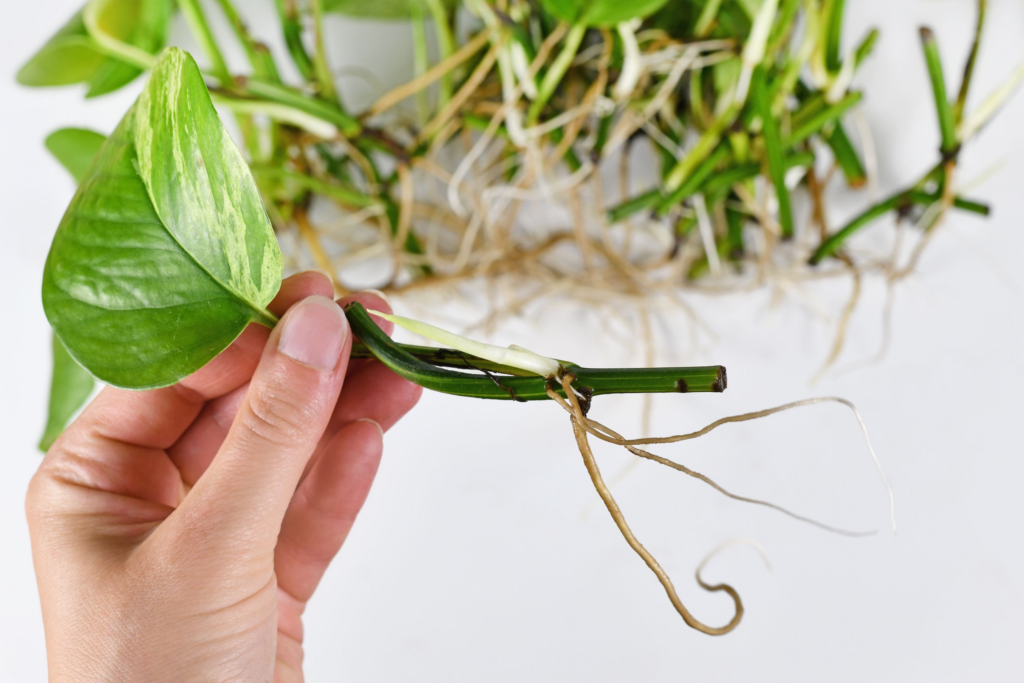
Step-2:
Now you need to remove the bottom one to two leaves from the stem cutting so that the notes get exposed at the base of the stem.

Step-3:
Now you need to prepare a container containing fresh water so that you can place the stem cutting in the water and submerge the stem in it but make sure the top leaves of the cutting do remain above the water.

Step-4:
Now it’s time to find the location to keep the pot. You need to keep it in a place where it gets bright indirect light and need to refresh the water once a week. You will find after some weeks small white roots growing from the nodes of this stem cutting and when they grow at least one two to three inches long then you need to plant the cutting into the soil.
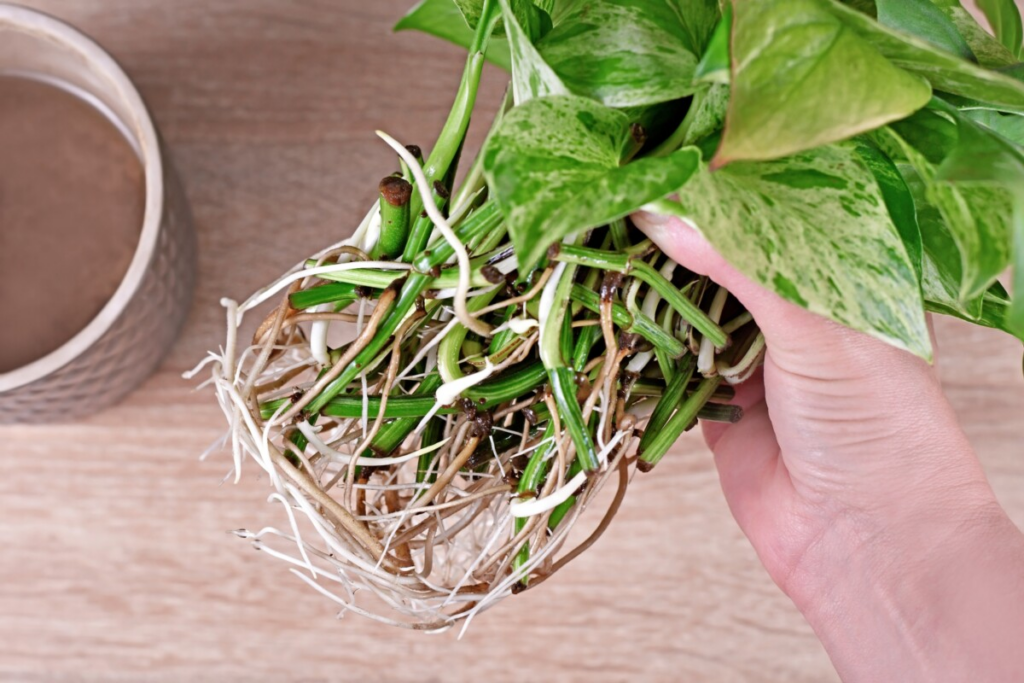
Step-5:
For planting the cutting into the soil you need to prepare a small pot having a well-draining potting mix so that you can plant the root cutting into the soil. After replanting make sure to water the cutting well and allow the excess of water to drain from the pot after which you can keep the pot back to its original bright location.

Step-6:
You need to keep the soil evenly moist in the first couple of weeks so that the cutting gets acclimated back to the soil and for the watering schedule after one to three weeks only water the plant when the soil gets dry slightly between watering.

Potting and Repotting Glacier Pothos:
- There is no need for regular repotting because they are strong enough to be grown in slightly root bound.
- However, you need to repot the glacier pothos once every two to three years which is enough for the plant unless they are not showing any signs of root round.
- make sure to keep an eye on the roots growing as if they grow from the pot drainage hole or circling inside the pot then it’s high time to repot the plant.
- The perfect time for repotting is considered during the spring or summer months because it is the active growing months in short the plant does suffer less from the shock of transformation.
- make sure to choose a pot that is only two to three inches larger than the past container as if you choose a two large container the plant may suffer from overwatering.
- In case of overwatering you need to remove the excess oil from the plant roots and then need to move the plant into a new pot in which you need to fill a fresh, well-draining soil mix.
- at last water the freshly potted plant thoroughly and keep it in the original location.
Pests and Plant Diseases:
- When we talk about pests and diseases the glacier pothos are not prone to them but you need to keep an eye out for some common pests that can happily live on this plant.
- Make sure to watch out for any sign of spider mites, thrips, scale, and mealybugs.
- The infestation can also be done by traveling from one infested house plant to another so make sure to check the house plant regularly showing any sign of pests to prevent them from any disease.
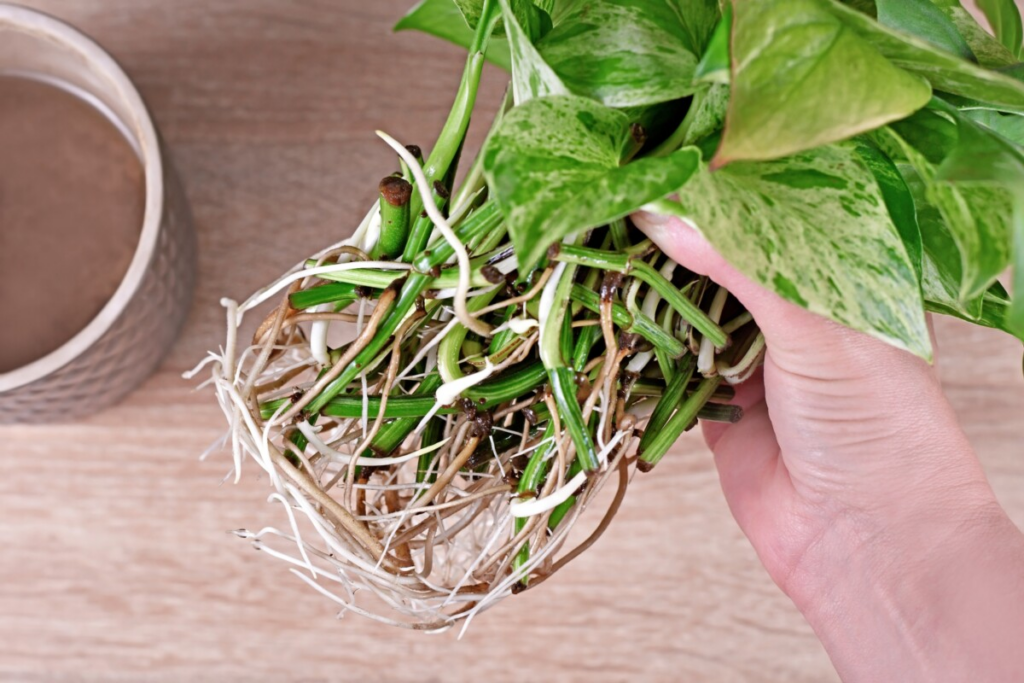
Common Problems With Glacier Pothos:
Although they are easy to care for and somehow Problem-free, there are a few common problems that you might look into and learn how to care for and solve the problem of tropical wine indoors such as yellow leaves, brown leaves, and stunted growth.
Yellow Leaves:
- if the glacier pothos start developing yellow leaves which is due to underwatering but there is also a saying that turning leaves to Yellow is a sign of overwatering lack of light and sometimes too much light.
- To figure out what is the reason behind it you need to take a close look at the plant-growing environment.
- make sure to let the soil dry the top two to three inches between the watering schedule.
- not to keep pothos in the bright indirect light and make sure to keep it a few feet away from the window.
- After figuring out what is the root cause of turning yellow leaves you would be successful in preventing the leaves from yellowing.
- although it is not possible to save the leaves that have already turned Yellow as they will die soon.
Brown Leaves:
- If you find turning off the green leaves to brown leaves it could be because of lack of humidity underwater.
- the leaves will start to get scorched if you keep the plant too much indirect light.
- make sure the keep the glacier pothos away from the dry location in the home and from the place where it gets direct sunlight because it will burn the delicate leaves of the plant.
- you need to make sure to water the plant regularly but avoid overwatering and underwater pothos.
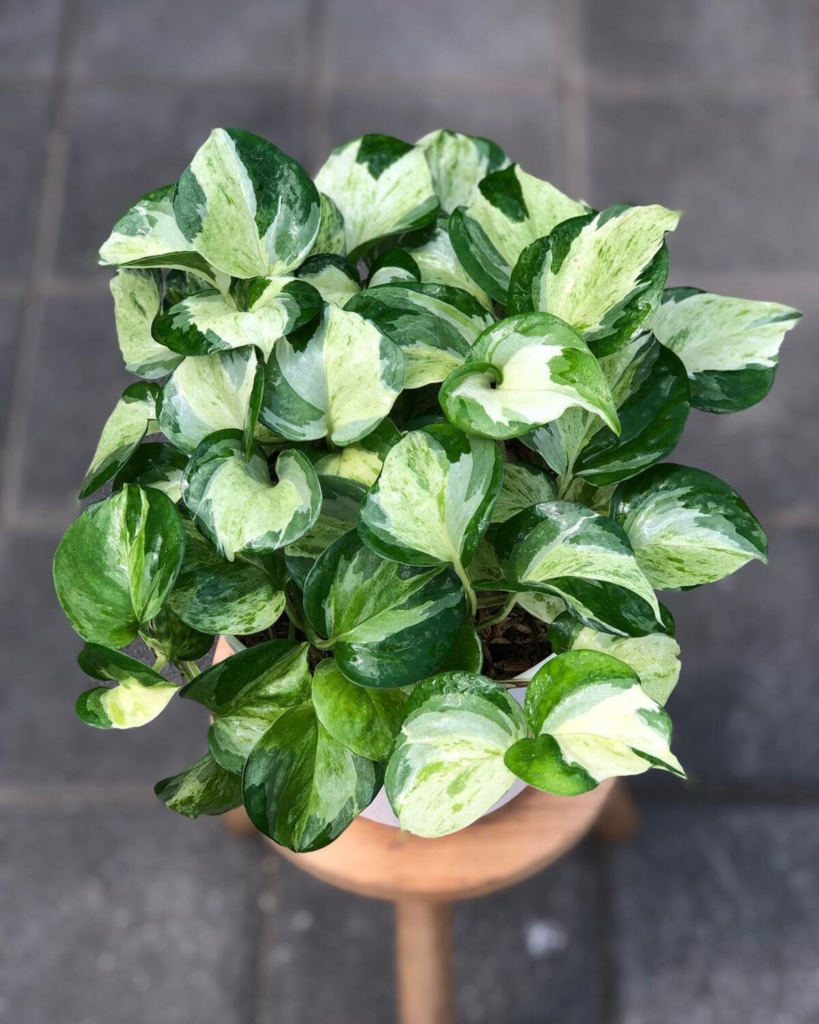
Stunted Growth:
- The glacier photos are known to be a slow-growing plant.
- in case the plant is not showing any signs of growth it means there is something wrong.
- you will find stunted growth because of the lack of light and if you move the plant to a brighter location all the problems will be fixed.
- make sure to fertilize the photos regularly in the spring and summer months because fertilizing the glacier pothos helps to boost the growth of the plant.
Glacier Pothos and N’Joy Pothos: Identifying Key Differences
There are two species of Epipremnum aureum having similar cultivars that are glacier pothos and Njoy pothos. The care requirement for growing them is however similar but their origin look and development characteristics are different. It is more difficult to buy glacier photos because they are hard to find.
You need to understand the origin of pothos if you really want to understand their key differences. When we talk about the glacier pothos they first appeared on Solomon Island as a tropical plant however the N joy potkos were developed and nurtured by the horticulturist for the general market using an odd stem, mutation of marble queen pothos.
It is hard to make a difference when they are at a younger stage but it gets easier to distinguish between them as they age. Talking about the leaves of the pothos both do have tiny leaves, forming a traditional heart shape formation that is similar to the golden pothos. Both of them look similar to IVY pothos.
There is a difference between N joy pothos doing erratic leaf growth while the glacier pothos has smaller round leaves and can be found in distributed size. The glacier pothos consists of a white, silver, and light green variation pattern which is the same as the marble queen which also contains a hue that is often paler than the Njoy pothos Which has greater patches of streaky and has patchy variegation Which follows the outline leave the center outward direction.
Although the glacier photos are delicate plants because it does have a velvety silky feel of leaves but the leaves of N joy pothos are waxier and leathery.
Conclusion:
Growing glacier pothos do add a great addition to your indoor. They used to grow great in small spaces reaching the maximum length of 6 feet. After reading the article will help you to grow them in your garden by getting all the basic requirements.
FAQ’s:
Are glacier pothos pet-safe plants?
Including all pothos the glacier pothos are also toxic if they get ingested which will make them to cause irritation to the lips, mouth, and throat and when they start to cause swelling it will be really serious so you need to keep the pet and kids away from it.

